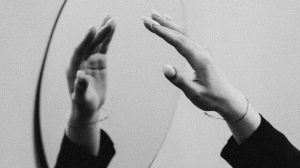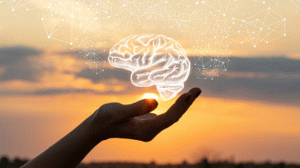I still remember the first time I was introduced to yoga. I was a teenager and I used to go to belly-dancing classes at the time. My teacher would spend the first 30 minutes of the 90-minute class leading us through deep stretches and yoga poses to prepare our minds and bodies for the practice (and prevent any injuries). We would return to stretching and yoga at the end of the class to calm down our minds and bodies and gently guide them into final relaxation. I think my love for belly-dancing was as strong as my irritation towards what seemed like never-ending yoga poses during the warm-up and wind-down. I found that part of the class to be incredibly boring. But that was 15 years ago.
No, I have not turned into a perfectly-Instagramable-incredibly-slim-always-tanned yoga teacher. Disclaimer, I am not perfectly Instagramable, nor am I incredibly slim or always tanned. And I am not a yoga teacher either. But I have come around to appreciating yoga as a powerful practice for my wellbeing. There are probably millions of books out there that can tell you all about its history, its many schools of thoughts, and its numerous benefits for your wellbeing. What I will attempt to do is to share why and how I find it powerful for my wellbeing, hoping some aspects will encourage you to try out the wellbeing practice I will introduce later on in the post.
- Body • Let me start from perhaps the most obvious benefit of yoga – or at least one of the biggest attractions for people to try out yoga at the beginning, especially in the Western world – physical wellbeing. Through its “asanas” (poses), yoga pushes your body’s flexibility, it increases its balance, it helps you discover muscles you didn’t even know existed. And it gives you a lot of satisfaction too because with practice, no matter your starting point, you see the improvements. The feet feel a little bit nearer when you try to reach them with your hands, your back leg feels a bit straighter when you go into the warriors, and your chest feels more open and relaxed.
- Mind • There are so many benefits I could talk about here, but the most useful in this time of severe mental distress and information overload due to the COVID-19 outbreak is yoga’s capacity to create space in the mind. Truth it, if I really want to do a pose well, I need to focus my full attention on my body. Else I risk falling down and injuring myself. By turning my awareness to the body to maintain that particular pose, I create spaciousness in my mind. In turn, this spaciousness opens the door for clarity, focus, perspective, and serenity. This is yoga’s most precious gift for my mental wellbeing.
- Heart • Thanks to this spaciousness, yoga also helps me to deepen my self-awareness to really notice how I am doing. What is the quality of my heart, right now? What does it need to feel nourished? What feelings and sensations do I need to attend to? More than once I have started a yoga practice after a long day helping others without stopping for a moment to nourish myself. Needless to say, all the tiredness and the exhaustion would come up during the practice – very often to my own frustration because I would realise I was more tired than I wanted to be. But each time, the frustration made space for kindness, gentleness, and genuine self-care.
- Soul • Finally, I find yoga to be a meditative practice that helps me feel more connected, not just to myself, but also to the Earth that supports me every day and to the Universe that pushes me to expand my consciousness. This connection between myself and the rest of life feels extremely reinvigorating and at the same time it allows me to experience life’s most important principle: equanimity.
You might resonate with parts of my experience, but I am sure yoga means many more things to each and every one of you. Since many of you are in isolation and lockdown conditions like I have been for the past 6 weeks now, the first recipe for Active Coping April I would like to share is a 30-minute gentle morning flow. This time, in addition to the usual written guidelines, you also find a video-recording of the practice where my university friend and yoga teacher Valeria Del Castillo guides you through a mix between Hatha yoga and Vinyasa flow. This practice is for all levels, but it is catered towards beginnings. It is a grounding practice that focuses on the feet, legs, and hips and it is a good way to come back to your body and hit reset whenever you need it.
As you do the practice, please listen to your body and do not push yourself more than you need to. Be kind and gentle. I hope this practice will help you feel more grounded in your mind, body, heart, and soul.
You can access the full guidelines HERE. The next blog post will present you with another recipe to use movement to boost team wellbeing.
About Greta and Recipes for Wellbeing
 Greta Rossi is a changemaker involved in multiple not-for-profit initiatives, including Recipes for Wellbeing, Akasha Innovation, Pitch Your Failure, and ChangemakerXchange. Recipes for Wellbeing works towards shifting the culture of changemaking to include a focus on holistic wellbeing to enable anyone to contribute more effectively to creating positive change in the world. From freely accessible wellbeing recipes, through wellbeing talks and workshops, to immersive wellbeing labs, we make wellbeing accessible to changemakers and their teams. If you’d like to host a talk, workshop, or retreat for your team or organisation, reach out to us at info@recipesforwellbeing.org.
Greta Rossi is a changemaker involved in multiple not-for-profit initiatives, including Recipes for Wellbeing, Akasha Innovation, Pitch Your Failure, and ChangemakerXchange. Recipes for Wellbeing works towards shifting the culture of changemaking to include a focus on holistic wellbeing to enable anyone to contribute more effectively to creating positive change in the world. From freely accessible wellbeing recipes, through wellbeing talks and workshops, to immersive wellbeing labs, we make wellbeing accessible to changemakers and their teams. If you’d like to host a talk, workshop, or retreat for your team or organisation, reach out to us at info@recipesforwellbeing.org.










